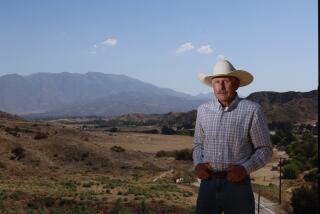IRVINE : Business Growth Concept Endorsed
The City Council endorsed a planning concept this week that would tie future commercial and industrial buildings in the Irvine Business Complex to the amount of traffic the projects would generate.
The council was trying to decide how to allow building in the business center to proceed after the city discovered in 1989 that too much development already had been approved. The approval of so much development violated the city’s land-use guidelines and threatened to create more traffic than streets could handle.
The area has been under a building moratorium since late 1989 to give planners time to figure out how to allow further development of vacant or partially developed parcels without creating a traffic nightmare.
On Tuesday night, the council voted 4 to 0 to grant each parcel in the business center a fixed number of vehicle trips that development would be allowed to create. Owners of commercial or industrial property could then decide what kinds of projects to build--as long as they don’t create too much traffic.
More commonly, cities decide what kinds of uses should be allowed on property and then set limits on how large the structures can be.
Councilman Bill Vardoulis excused himself from the meeting on the advice of the city attorney. Vardoulis said he has a conflict of interest since he is part owner of property in the complex.
The “vehicle trips” planning concept was first suggested by developers, who want more flexibility in what may be built in the Irvine Business Complex, a huge area stretching roughly from Newport Beach to Tustin along Irvine’s western border.
By adopting a new planning concept for the business center, the council has required that new studies be conducted to see how the proposal would affect traffic, air pollution and other environmental concerns. Those studies and the required hearings to allow public discussion won’t be completed until early 1992, according to city planners.
Under the vehicle-trip proposal, streets in and around the area will require widening and other major improvements. Businesses would also be required to get more employees to find ways to get to work other than driving alone.
More to Read
Sign up for Essential California
The most important California stories and recommendations in your inbox every morning.
You may occasionally receive promotional content from the Los Angeles Times.










